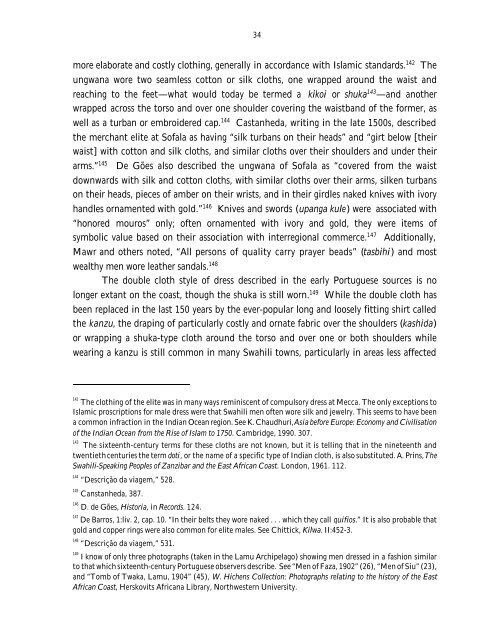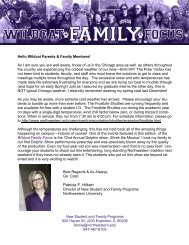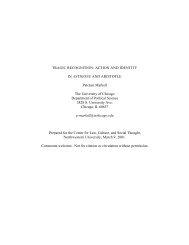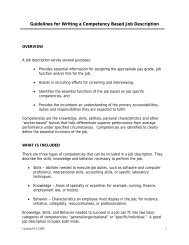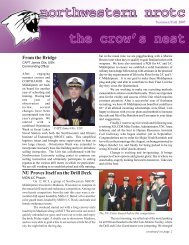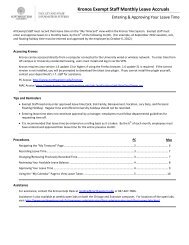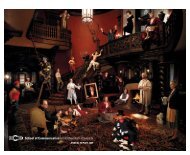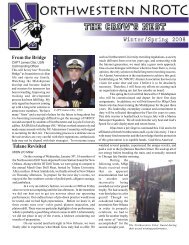Artistry Permits and Custom May Ordain - Northwestern University
Artistry Permits and Custom May Ordain - Northwestern University
Artistry Permits and Custom May Ordain - Northwestern University
Create successful ePaper yourself
Turn your PDF publications into a flip-book with our unique Google optimized e-Paper software.
34<br />
more elaborate <strong>and</strong> costly clothing, generally in accordance with Islamic st<strong>and</strong>ards. 142 The<br />
ungwana wore two seamless cotton or silk cloths, one wrapped around the waist <strong>and</strong><br />
reaching to the feet—what would today be termed a kikoi or shuka 143 —<strong>and</strong> another<br />
wrapped across the torso <strong>and</strong> over one shoulder covering the waistb<strong>and</strong> of the former, as<br />
well as a turban or embroidered cap. 144 Castanheda, writing in the late 1500s, described<br />
the merchant elite at Sofala as having “silk turbans on their heads” <strong>and</strong> “girt below [their<br />
waist] with cotton <strong>and</strong> silk cloths, <strong>and</strong> similar cloths over their shoulders <strong>and</strong> under their<br />
arms.” 145 De Gões also described the ungwana of Sofala as “covered from the waist<br />
downwards with silk <strong>and</strong> cotton cloths, with similar cloths over their arms, silken turbans<br />
on their heads, pieces of amber on their wrists, <strong>and</strong> in their girdles naked knives with ivory<br />
h<strong>and</strong>les ornamented with gold.” 146 Knives <strong>and</strong> swords (upanga kule) were associated with<br />
“honored mouros” only; often ornamented with ivory <strong>and</strong> gold, they were items of<br />
symbolic value based on their association with interregional commerce. 147 Additionally,<br />
Mawr <strong>and</strong> others noted, “All persons of quality carry prayer beads” (tasbihi) <strong>and</strong> most<br />
wealthy men wore leather s<strong>and</strong>als. 148<br />
The double cloth style of dress described in the early Portuguese sources is no<br />
longer extant on the coast, though the shuka is still worn. 149 While the double cloth has<br />
been replaced in the last 150 years by the ever-popular long <strong>and</strong> loosely fitting shirt called<br />
the kanzu, the draping of particularly costly <strong>and</strong> ornate fabric over the shoulders (kashida)<br />
or wrapping a shuka-type cloth around the torso <strong>and</strong> over one or both shoulders while<br />
wearing a kanzu is still common in many Swahili towns, particularly in areas less affected<br />
142 The clothing of the elite was in many ways reminiscent of compulsory dress at Mecca. The only exceptions to<br />
Islamic proscriptions for male dress were that Swahili men often wore silk <strong>and</strong> jewelry. This seems to have been<br />
a common infraction in the Indian Ocean region. See K. Chaudhuri, Asia before Europe: Economy <strong>and</strong> Civilisation<br />
of the Indian Ocean from the Rise of Islam to 1750. Cambridge, 1990. 307.<br />
143 The sixteenth-century terms for these cloths are not known, but it is telling that in the nineteenth <strong>and</strong><br />
twentieth centuries the term doti, or the name of a specific type of Indian cloth, is also substituted. A. Prins, The<br />
Swahili-Speaking Peoples of Zanzibar <strong>and</strong> the East African Coast. London, 1961. 112.<br />
144 “Descrição da viagem,” 528.<br />
145 Canstanheda, 387.<br />
146 D. de Gões, Historia, in Records. 124.<br />
147 De Barros, 1:liv. 2, cap. 10. “In their belts they wore naked . . . which they call quifios.” It is also probable that<br />
gold <strong>and</strong> copper rings were also common for elite males. See Chittick, Kilwa. II:452-3.<br />
148 “Descrição da viagem,” 531.<br />
149 I know of only three photographs (taken in the Lamu Archipelago) showing men dressed in a fashion similar<br />
to that which sixteenth-century Portuguese observers describe. See “Men of Faza, 1902” (26), “Men of Siu” (23),<br />
<strong>and</strong> “Tomb of Twaka, Lamu, 1904” (45), W. Hichens Collection: Photographs relating to the history of the East<br />
African Coast, Herskovits Africana Library, <strong>Northwestern</strong> <strong>University</strong>.


